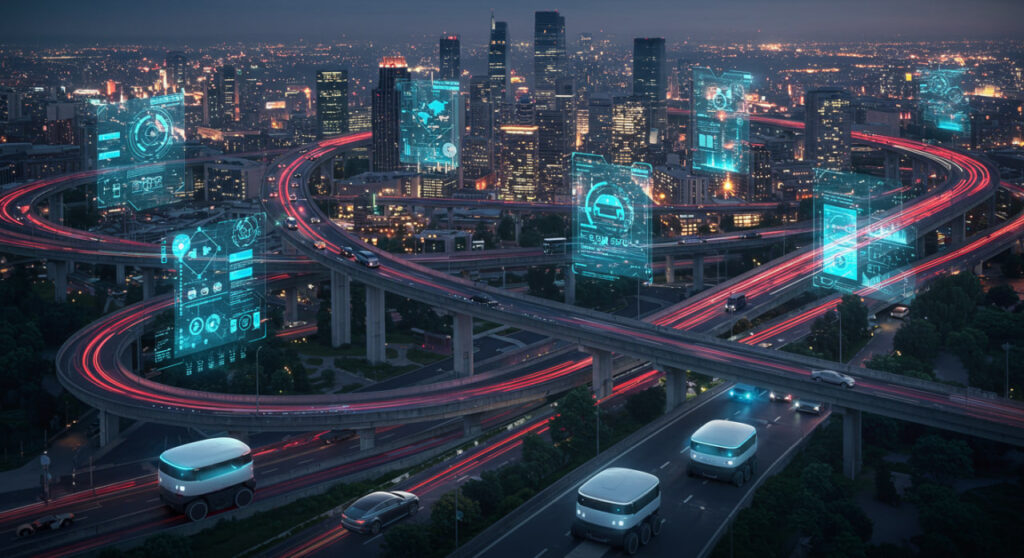The world of transportation is on the cusp of a revolution, with autonomous driving technology promising to reshape how we move, live, and interact with our environment. Self-driving cars, once a sci-fi fantasy, are now a tangible reality, with companies like Tesla, Waymo, and Cruise pushing the boundaries of innovation. But what does the future hold for autonomous vehicles? From advancements in artificial intelligence to regulatory hurdles and societal impacts, this article explores the exciting trajectory of self-driving cars and what we can expect in the coming years.
The Current State of Autonomous Driving
Leveling Up: Understanding Autonomy Levels
To grasp the future of self-driving cars, it’s essential to understand where we are today. The Society of Automotive Engineers (SAE) defines six levels of driving automation, from Level 0 (no automation) to Level 5 (full automation). Most vehicles on the road today operate at Level 2 or Level 3, offering features like adaptive cruise control, lane-keeping assistance, and limited self-driving capabilities under human supervision. Companies like Waymo have achieved Level 4 autonomy in controlled environments, such as geofenced urban areas, where vehicles can operate without human intervention under specific conditions. Level 5, where a car can drive anywhere, anytime, without a steering wheel or human input, remains the ultimate goal.
Key Players in the Race
The autonomous driving landscape is a competitive arena. Tesla’s Full Self-Driving (FSD) suite leverages its vast data from millions of vehicles to train neural networks, aiming for Level 4 and beyond. Waymo, backed by Alphabet, operates robotaxi services in cities like Phoenix and San Francisco, showcasing impressive real-world applications. Meanwhile, Cruise and Zoox are testing fully autonomous vehicles, and traditional automakers like Ford and GM are investing heavily in their own systems. Each player brings unique strengths, from Tesla’s data-driven approach to Waymo’s meticulous mapping and sensor technology.
Technological Advancements Driving the Future
AI and Machine Learning: The Brain of Autonomy
At the heart of self-driving cars is artificial intelligence (AI), particularly machine learning and neural networks. These systems process vast amounts of data from cameras, LIDAR, radar, and ultrasonic sensors to interpret the world in real time. Future advancements will see AI becoming more efficient, capable of handling edge cases—like erratic pedestrian behavior or extreme weather—with greater accuracy. For example, companies are developing “end-to-end” neural networks that can directly translate sensor inputs into driving decisions, reducing reliance on hardcoded rules and improving adaptability.
Sensor Evolution: Seeing the World Clearly
Sensors are the eyes and ears of autonomous vehicles. LIDAR, which uses laser pulses to create 3D maps, remains a cornerstone for many systems, offering unparalleled precision. However, Tesla’s vision-based approach, relying solely on cameras and AI, is sparking debate about whether LIDAR is necessary. In the future, we may see hybrid sensor suites that combine the strengths of LIDAR, radar, and high-resolution cameras to create a more robust perception system. Additionally, advancements in sensor miniaturization and cost reduction will make autonomous tech more accessible for mass-market vehicles.
Connectivity and V2X Communication
Vehicle-to-Everything (V2X) communication is set to play a pivotal role. This technology allows cars to “talk” to other vehicles, infrastructure, and even pedestrians’ devices, sharing data about road conditions, traffic signals, and potential hazards. Imagine a self-driving car receiving real-time updates about a traffic jam or a cyclist in a blind spot. As 5G networks expand, V2X will enable faster, more reliable data exchange, enhancing safety and efficiency. Cities like Singapore and Dubai are already piloting smart infrastructure to support V2X-enabled autonomous vehicles.

Challenges on the Road Ahead
Regulatory Roadblocks
While technology is advancing rapidly, regulations are struggling to keep pace. Governments worldwide are grappling with how to certify autonomous vehicles, ensure safety, and assign liability in accidents. In the U.S., the National Highway Traffic Safety Administration (NHTSA) is developing frameworks, but progress is uneven across states. Europe and China are also crafting policies, with China pushing aggressively to lead in autonomous driving. Harmonizing global standards will be critical to scaling deployment, but political and ethical debates—such as who’s responsible in a crash—may delay widespread adoption.
Public Trust and Acceptance
Convincing the public to embrace self-driving cars is no small feat. High-profile accidents involving autonomous vehicles, like those during early testing phases, have fueled skepticism. Building trust requires transparency, rigorous testing, and clear communication about safety benefits. Studies suggest autonomous cars could reduce traffic fatalities by up to 90%, as they eliminate human errors like distracted driving. However, achieving this potential means overcoming psychological barriers and demonstrating reliability through millions of incident-free miles.
Ethical Dilemmas
Self-driving cars must make split-second decisions in complex scenarios, raising ethical questions. For instance, how should an autonomous vehicle prioritize outcomes in an unavoidable accident? Programmers face the daunting task of embedding ethical frameworks into AI, balancing utilitarian principles with real-world unpredictability. Ongoing research, including MIT’s Moral Machine project, is exploring public preferences, but consensus remains elusive.
The Societal Impact of Autonomous Driving
Transforming Urban Landscapes
Widespread adoption of self-driving cars could reshape cities. With fewer accidents and optimized traffic flow, urban planners may reduce parking spaces, which currently occupy up to 30% of city land. Shared autonomous fleets, like Waymo’s robotaxis, could decrease the need for personal car ownership, easing congestion and pollution. However, this shift may challenge industries like auto insurance and traditional taxis, requiring economic adaptation.
Accessibility and Inclusion
Autonomous vehicles promise to enhance mobility for those who can’t drive, such as the elderly, disabled, or visually impaired. Imagine a world where a self-driving car can take a senior citizen to a doctor’s appointment or a child to school without a human driver. This inclusivity could bridge gaps in transportation equity, but affordability and access to these services in rural or underserved areas remain critical considerations.
Environmental Implications
Self-driving cars, especially electric ones, could significantly reduce carbon emissions. Optimized driving patterns, such as smooth acceleration and braking, improve fuel efficiency, while shared fleets reduce the number of vehicles on the road. However, the production of advanced sensors and computing hardware is resource-intensive, and scaling autonomous tech must be paired with sustainable manufacturing to maximize environmental benefits.
What’s Next for Self-Driving Cars?
Short-Term Milestones (2025–2030)
In the next five years, expect to see expanded robotaxi services in major cities, with companies like Waymo and Cruise scaling operations. Level 4 autonomy will become more common in controlled environments, such as urban centers and highways. Automakers will integrate advanced driver-assistance systems (ADAS) into more consumer vehicles, bridging the gap to full autonomy. Regulatory frameworks will mature, particularly in tech-forward regions like California and Singapore.
Long-Term Vision (2030 and Beyond)
By 2030, Level 5 autonomy may emerge in limited contexts, with fully driverless cars operating in specific cities or regions. Advances in AI, sensor technology, and infrastructure will enable broader deployment. We may see autonomous trucks revolutionizing logistics, reducing shipping costs and improving efficiency. Ultimately, the dream of a world where cars drive themselves seamlessly—freeing up time, reducing accidents, and transforming mobility—could become reality.
FAQs About Autonomous Driving
What is the difference between Level 4 and Level 5 autonomy?
Level 4 autonomy allows a vehicle to drive itself under specific conditions, such as within a geofenced area or in certain weather, but may require human intervention in edge cases. Level 5 autonomy is full self-driving capability, where a vehicle can operate anywhere, anytime, without human input or even a steering wheel.
Are self-driving cars safe?
Self-driving cars have the potential to be safer than human-driven vehicles by eliminating errors like distracted driving. However, their safety depends on rigorous testing, advanced AI, and robust sensors. Ongoing real-world trials are improving their reliability, but public trust remains a hurdle.
When will fully autonomous cars be available to the public?
Fully autonomous (Level 5) cars are likely a decade or more away for widespread consumer use, though Level 4 systems, like robotaxis, are already operating in select cities and will expand by 2030.
How will autonomous cars impact jobs?
Autonomous vehicles may disrupt industries like trucking, taxis, and delivery services, potentially reducing jobs for drivers. However, they could create new opportunities in AI development, vehicle maintenance, and fleet management.
Can self-driving cars operate in bad weather?
Current autonomous systems struggle in extreme weather, such as heavy snow or fog, due to sensor limitations. Future advancements in AI and sensor technology aim to improve performance in adverse conditions.



